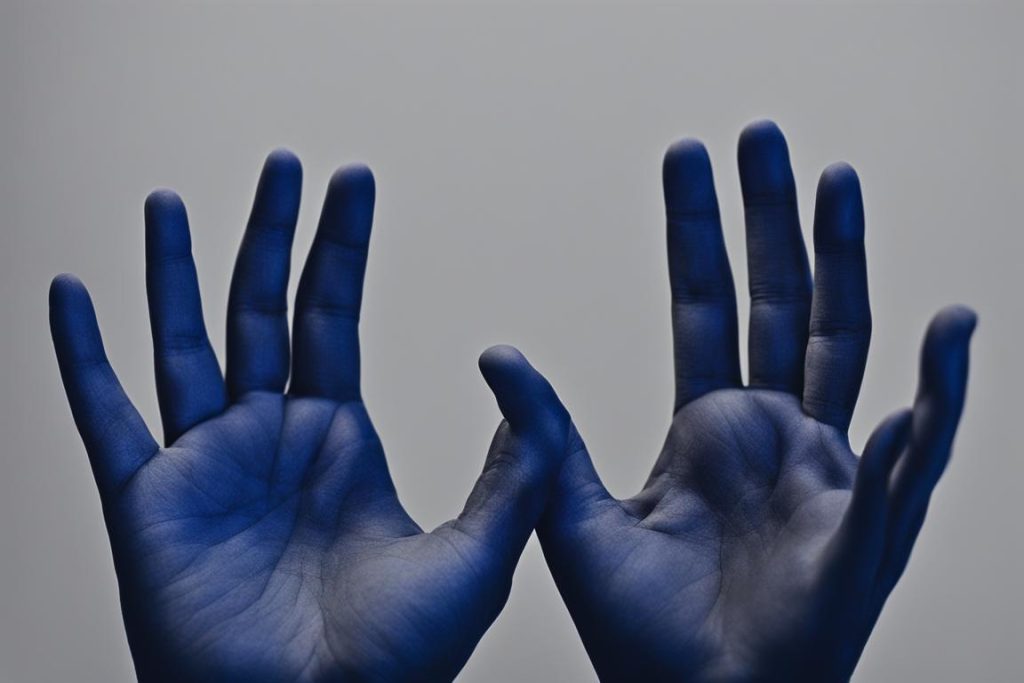Being touched by someone inappropriately in a dream can be a disconcerting and unsettling experience. It may evoke feelings of discomfort, violation, and even fear. Inappropriate touching, whether it’s sexual harassment or non-consensual contact, is a serious issue that can deeply impact individuals.
Dreams often reflect our inner thoughts, emotions, and fears. They can serve as a way for the subconscious mind to process past traumatic experiences or current feelings of vulnerability, shame, and powerlessness. In the case of inappropriate touch in dreams, it may be a manifestation of unresolved trauma or a call to address boundary violations in waking life.
Exploring the significance of these dreams and understanding their underlying causes can be a crucial step towards healing and empowerment. By gaining a deeper understanding of why these dreams occur and the emotions they evoke, individuals can find strategies to reclaim personal power and establish healthy boundaries.
Inappropriate Touch in Dreams
- Sexual assault dreams can be a reflection of past traumatic experiences or current feelings of vulnerability.
- Exploring the emotions and triggers behind these dreams can lead to strategies for empowerment.
- Dream characters can represent individuals who have violated personal boundaries in real life.
- Addressing the root causes of powerlessness can help in reclaiming agency in waking life.
- Dream settings can symbolize feelings of vulnerability and body image insecurities.
Understanding the Impact of Sexual Assault in Dreams
Dreams of sexual assault can have a profound emotional and psychological impact on individuals. These dreams often evoke the same trauma and distress that accompanies real-life experiences of assault or harassment. The emotions experienced in these dreams can be overwhelming, leaving individuals feeling vulnerable and powerless.
Exploring the significance of these dreams can provide valuable insights into the underlying emotions and triggers. By delving deeper into the symbolism and meaning behind these dreams, individuals can gain a better understanding of their own experiences and take steps towards healing and empowerment.
Addressing the impact of sexual assault in dreams requires a compassionate approach. It is important to acknowledge the emotions that arise from these dreams and provide a supportive environment for individuals to express their feelings. Engaging in therapy or counseling can be incredibly beneficial, as it allows individuals to process their experiences and develop coping strategies to navigate the emotional aftermath of these dreams.
Exploring Emotions and Triggers
When attempting to understand the impact of sexual assault in dreams, it is essential to explore the emotions and triggers associated with these experiences. The emotions that arise from these dreams can vary from fear and helplessness to anger and betrayal. By identifying these emotions, individuals can gain valuable insight into their own emotional well-being and work towards healing.
In addition to emotions, it is important to identify the triggers that may be contributing to these dreams. Triggers could include current situations that make the individual feel vulnerable or experiences from the past that have not been fully processed. By identifying these triggers, individuals can take steps to avoid or confront them in a safe and empowering manner.
| Emotions | Triggers |
|---|---|
| Fear | Feeling unsafe in certain environments |
| Helplessness | Power imbalances in personal relationships |
| Anger | Past trauma that has not been addressed |
“Understanding the emotions and triggers behind dreams of sexual assault is crucial in finding strategies for empowerment and healing.” – Dr. Jane Stevens, Clinical Psychologist
By addressing these emotions and triggers, individuals can take proactive steps towards reclaiming their personal power and finding healing and empowerment after experiencing dreams of sexual assault.
The Significance of Dream Characters
Dream characters play a significant role in our dreams, often representing individuals who have caused discomfort or crossed boundaries in real life. They offer valuable insights into our subconscious thoughts and emotions, shedding light on unresolved issues or unresolved conflicts that we may be experiencing. When it comes to dreams of inappropriate touch, dream characters such as a close friend or boyfriend’s friend can symbolize the violation of personal boundaries and the lack of respect for our personal space.
Having a dream character that represents someone from our waking life who has made us feel uncomfortable or violated can be a manifestation of our fears and anxieties. It’s important to pay attention to these dreams and explore the underlying emotions they evoke. By doing so, we can gain a better understanding of our own boundaries, identify areas where we feel vulnerable, and work towards reclaiming our sense of security and personal agency.
“Dreams are the touchstones of our characters.” – Henry David Thoreau
Dreams involving dream characters who have caused discomfort can serve as a powerful tool for self-reflection and growth. They allow us to confront our fears, establish healthier boundaries, and address any unresolved issues from our past or present experiences. By recognizing the significance of dream characters and the discomfort they represent, we can embark on a journey of self-discovery and empowerment, ultimately shaping a better future for ourselves.
| Dream Character | Representation |
|---|---|
| Close friend | Symbolizes a person we trust who has crossed our boundaries or caused discomfort in some way. |
| Boyfriend’s friend | Represents an individual associated with our romantic partner, who may have made us feel uneasy or violated our boundaries. |
Uncovering Root Causes of Powerlessness
In dreams of sexual assault, the underlying feelings of powerlessness can often be traced back to various root causes in waking life. One significant factor contributing to this sense of powerlessness is parental pressure. When individuals are subjected to high expectations and demands from their parents, they may feel limited in their ability to make choices that align with their own desires and aspirations.
Grief and loss can also play a role in the manifestation of these dreams. The experience of losing a loved one or going through a significant life change can leave individuals feeling isolated and helpless. These feelings of grief can create a vulnerability that is reflected in dreams of assault, where the individual may struggle to regain a sense of control and agency.
Furthermore, family conflict can contribute to a pervasive sense of powerlessness. Disagreements and tensions within the family unit can create an environment where personal boundaries are disregarded, leading to feelings of insecurity and discomfort. These unresolved conflicts can find their way into dreams as inappropriate touch, highlighting the deep-rooted power dynamics at play.
| Root Causes of Powerlessness | Examples |
|---|---|
| Parental Pressure | Expectations and demands from parents that limit individual choice |
| Grief and Loss | Feelings of isolation and helplessness following the loss of a loved one or significant life change |
| Family Conflict | Disagreements and tensions within the family unit that lead to boundary violations |
Addressing these root causes of powerlessness is essential in finding empowerment and reclaiming agency in waking life. Working through parental pressures involves setting healthy boundaries and establishing clear communication with parents. Processing grief and loss requires seeking support from loved ones or a therapist to navigate the complex emotions associated with these experiences. Resolving family conflict may involve engaging in family therapy or seeking mediation to address underlying issues and establish healthier dynamics.
By understanding and addressing these root causes, individuals can take steps toward reclaiming their personal power and creating a sense of safety and autonomy in their lives.

The Symbolism of Dream Settings
In dreams, the settings we find ourselves in can often hold deep symbolic meaning. One example of this is the high school locker room, which can represent feelings of vulnerability, body image issues, and self-consciousness.
The high school locker room is a place where individuals may feel exposed and judged by their peers. It is a setting where body comparisons are common, and the pressure to meet societal beauty standards can be overwhelming. For many people, these insecurities and fears carry over into their dreams, manifesting as dreams of being in a high school locker room.
These dreams may evoke feelings of vulnerability and self-consciousness, highlighting the dreamer’s underlying insecurities related to body image. The dreamer may feel exposed, as if their flaws and imperfections are on display for all to see. It is important to note that these dreams are not a reflection of the dreamer’s actual physical appearance, but rather a reflection of their internal struggles with self-acceptance and self-esteem.
Exploring these feelings within the dream can lead to a greater understanding of self-acceptance and body positivity. It can be an opportunity for the dreamer to confront their insecurities and work towards building a more positive relationship with their body. By recognizing that these dreams are a product of societal pressures and unrealistic beauty standards, individuals can begin to challenge these harmful narratives and embrace their unique beauty.
Symbolism of Dream Settings
| Dream Setting | Symbolic Meaning |
|---|---|
| High school locker room | Vulnerability, body image issues, self-consciousness |
| Forest | Exploration, growth, and transformation |
| Beach | Relaxation, freedom, and emotional cleansing |
| Abandoned house | Unresolved emotions, past traumas, and fear of the unknown |
It is important to remember that dream symbolism is highly personal and can vary from individual to individual. While certain dream settings may have commonly accepted meanings, the interpretation of dreams is subjective and should be approached with an open mind. Exploring the symbolism of dream settings can provide valuable insights into our subconscious thoughts and emotions, allowing us to better understand ourselves and navigate our waking lives with greater self-awareness.
Tactile Hallucinations and Inappropriate Touch
Tactile hallucinations can be a perplexing and distressing experience, as they provide sensations of touch without any physical stimulus. These hallucinations can manifest in various forms, such as the feeling of skin being stretched, the perception of insects crawling, the sensation of being kissed, or even the perception of internal organ movement. Additionally, individuals may also experience itching and burning skin sensations. These sensations can be alarming and may significantly impact one’s daily life and overall well-being.
Formication is a specific type of tactile hallucination that involves the sensation of insects crawling on or under the skin. This can be an extremely uncomfortable and unsettling experience, leading to anxiety and distress. Similarly, the perception of being kissed or experiencing internal organ movement can create feelings of violation and unease. It is essential to understand that these hallucinations are subjective experiences and are not grounded in reality.
“The sensation of touch in dreams can be surprisingly vivid, and individuals may wake up feeling as though they were genuinely touched. However, it is crucial to recognize that these tactile sensations are a manifestation of the dream state and not actual physical contact.” – Dr. Jessica Lewis, Neurologist
The Brain’s Role in Tactile Hallucinations
Tactile hallucinations can be associated with underlying brain function abnormalities. The exact causes are still not fully understood, but they can be linked to various factors. Mental illnesses such as schizophrenia and severe depression can contribute to the development of tactile hallucinations. Additionally, the use of hallucinogenic drugs or alcohol abuse and withdrawal can also induce these experiences. Medical conditions such as Parkinson’s disease, Lewy body dementia, Alzheimer’s disease, and certain medications have also been associated with tactile hallucinations.

It is important to note that the presence of tactile hallucinations should be evaluated by a medical professional to determine the underlying cause. Proper diagnosis and identification of any contributing factors are crucial for developing an appropriate treatment plan.
| Possible Causes of Tactile Hallucinations |
|---|
| Mental illnesses |
| Drug use |
| Alcohol abuse or withdrawal |
| Parkinson’s disease |
| Lewy body dementia |
| Alzheimer’s disease |
| Certain medications |
Understanding the underlying cause of tactile hallucinations is essential for effective treatment. Once a diagnosis has been made, healthcare professionals can develop a tailored approach that may include medications, such as antipsychotics, cognitive-behavioral therapy, psychotherapy, and support from loved ones. It is crucial for individuals experiencing tactile hallucinations to seek professional help and support to manage these experiences and improve their overall quality of life.
Causes of Tactile Hallucinations
Tactile hallucinations, the perception of touch without any physical stimulus, can be attributed to various factors. Mental illnesses, such as schizophrenia, severe depression, and postpartum psychosis, are known to induce tactile hallucinations. Illicit drug use, especially hallucinogens, can also trigger these sensory experiences. Additionally, alcohol abuse or withdrawal can lead to a rare condition called alcoholic hallucinosis, which includes tactile hallucinations as a symptom. Furthermore, certain medical conditions like Parkinson’s disease, Lewy body dementia, and Alzheimer’s disease have been associated with tactile hallucinations.
To delve deeper into the causes of tactile hallucinations, it’s important to understand the role of mental illness. Conditions like schizophrenia disrupt the brain’s perception and processing of sensory information, leading to hallucinations, including tactile ones. Severe depression can also alter the brain’s functioning, resulting in hallucinatory sensations. Similarly, postpartum psychosis, a rare psychiatric disorder that can occur after childbirth, can cause hallucinations, including tactile ones.
Drug use, particularly hallucinogens like LSD or magic mushrooms, can profoundly affect the brain’s neurotransmitter systems and sensory perception, leading to tactile hallucinations. The consumption of these substances can disrupt the delicate balance of chemicals in the brain, causing hallucinations and sensory distortions.
“Alcoholic hallucinosis is a rare condition that can occur during alcohol withdrawal or chronic alcohol abuse. It involves auditory, visual, and tactile hallucinations, with the latter often manifesting as the sensation of insects crawling on the skin or internal organ movement.”
Additionally, certain medical conditions and medications can contribute to tactile hallucinations. Parkinson’s disease affects the nervous system and can lead to disruptions in sensory processing, potentially resulting in tactile hallucinations. Similarly, Lewy body dementia, a form of dementia characterized by the presence of abnormal protein deposits in the brain, can cause hallucinations, including tactile ones. Furthermore, medications like anticholinergic drugs, used to treat various conditions, can induce hallucinations as a side effect.
| Mental Illness | Drug Use | Medical Conditions |
|---|---|---|
| Schizophrenia | Hallucinogens | Parkinson’s disease |
| Severe depression | Lewy body dementia | |
| Postpartum psychosis | Alzheimer’s disease |
Understanding the causes of tactile hallucinations is crucial in diagnosing and treating individuals who experience these sensations. By identifying the underlying factors, healthcare professionals can develop targeted interventions and provide appropriate support to improve the individual’s overall well-being.
Diagnosis and Treatment of Tactile Hallucinations
When experiencing tactile hallucinations, a comprehensive evaluation is essential to determine the underlying cause. This evaluation typically involves a thorough review of the individual’s medical history, including any previous mental health conditions, substance use, or neurological disorders. Diagnostic testing, such as blood work and brain scans, may also be conducted to rule out any physical causes.
Once a diagnosis is established, treatment options can be explored. In cases where the hallucinations are associated with mental illness, antipsychotic medications may be prescribed to help manage the symptoms. These medications work by altering brain chemistry and reducing the intensity of hallucinations.
In addition to medication, psychotherapy approaches have shown promise in treating tactile hallucinations. Cognitive behavioral therapy (CBT) can help individuals identify and challenge distorted thoughts and beliefs associated with the hallucinations. This type of therapy aims to modify behaviors and improve coping skills. Other forms of psychotherapy, such as support groups or individual counseling, can also provide a safe space for individuals to express their experiences and receive guidance from professionals and peers.
Support from healthcare professionals and loved ones is crucial for individuals dealing with tactile hallucinations. Having a strong support system can provide emotional validation and encouragement throughout the treatment process. It is important to remember that each person’s experience with tactile hallucinations is unique, and treatment should be tailored to their specific needs.

Common Treatment Approaches for Tactile Hallucinations
| Treatment Approach | Description |
|---|---|
| Antipsychotic Medications | Prescribed to reduce the intensity of hallucinations by altering brain chemistry. |
| Cognitive Behavioral Therapy (CBT) | Focuses on identifying and challenging distorted thoughts and beliefs associated with hallucinations, with the aim of modifying behaviors and improving coping skills. |
| Psychotherapy | Includes support groups and individual counseling, providing a safe space for individuals to express their experiences and receive guidance. |
| Support from Healthcare Professionals | Offering ongoing monitoring, guidance, and emotional support throughout the treatment process. |
Conclusion
After delving into the world of dreams and inappropriate touch, it is clear that these dreams can serve as a reflection of real-life experiences and emotional states. It is important to understand that these dreams may be triggered by past traumas or current situations that make us feel vulnerable and powerless.
To cope with these dreams and their emotional impact, there are certain recommendations and coping strategies that can be helpful. First and foremost, seeking professional support, such as therapy, can provide a safe space to navigate the complex emotions surrounding these dreams and foster personal growth.
Additionally, empowering ourselves through self-care practices and mindfulness techniques can be instrumental in reclaiming our sense of safety and well-being. Building a support system of trusted friends and loved ones who can provide understanding and validation is also crucial in the journey towards healing.
Remember, dreams of inappropriate touch do not define us. By exploring the meaning behind these dreams, addressing the underlying causes, and implementing coping strategies, we can empower ourselves to overcome the emotional impact and navigate the path towards personal growth and resilience.
FAQ
What does it mean if I dream about being touched inappropriately by someone?
Dreams of inappropriate touch can be a reflection of past traumatic experiences or current feelings of vulnerability, shame, and powerlessness. They may serve as a catalyst for taking control of triggering situations and reclaiming personal power.
Can dreams of sexual assault evoke the same emotions and trauma as real-life experiences?
Yes, dreams of sexual assault can evoke the same emotions and trauma as real-life experiences. They may be a way for the subconscious mind to process and bring awareness to past traumas or current situations that make the dreamer feel powerless.
What do dream characters, such as a close friend or boyfriend’s friend, represent in dreams of sexual assault?
Dream characters can represent individuals who have caused discomfort or crossed boundaries in real life. In the context of sexual assault dreams, they may symbolize the lack of respect for personal space and boundary violation, leading to feelings of unease and insecurity.
What can contribute to feelings of powerlessness in real-life situations, leading to dreams of sexual assault?
External factors such as parental pressure, grief, and family conflict can contribute to feelings of powerlessness, which may manifest as dreams of sexual assault. Addressing these root causes can help in finding empowerment and reclaiming agency in waking life.
What do dream settings, like a high school locker room, symbolize in dreams of sexual assault?
Dream settings, such as a high school locker room, can symbolize feelings of vulnerability and self-consciousness. These dreams may reflect insecurities about body image and the fear of being exposed or judged by others. Exploring these feelings can lead to a greater understanding of self-acceptance and body positivity.
What are tactile hallucinations, and what sensations can they provide?
Tactile hallucinations are sensations of touch without any physical stimulus. They can take various forms, including the feeling of skin being stretched, the perception of insects crawling, the sensation of being kissed, and the perception of internal organ movement. Itching and burning skin sensations may also occur.
What factors can cause tactile hallucinations?
Tactile hallucinations can result from various factors, including mental illnesses like mania, postpartum psychosis, severe depression, and schizophrenia. Illicit drug use, particularly hallucinogens, can also induce tactile hallucinations. Alcohol abuse or withdrawal can lead to alcoholic hallucinosis, a rare condition that includes tactile hallucinations. Medical conditions such as Parkinson’s disease, Lewy body dementia, Alzheimer’s disease, and certain medications can also cause tactile hallucinations.
How are tactile hallucinations diagnosed and treated?
Diagnosing tactile hallucinations involves taking a thorough medical history and performing diagnostic testing, such as blood work and brain scans. Treatment aims to address the underlying cause, such as mental illness or Parkinson’s disease. This may involve medications, cognitive behavioral therapy, and psychotherapy. Support from healthcare professionals and loved ones is crucial in managing tactile hallucinations and improving overall quality of life.
What should I do if I frequently dream about inappropriate touch?
Dreams of inappropriate touch can serve as a reflection of real-life experiences and emotional states. By exploring the meaning behind these dreams and addressing the underlying causes, individuals can find coping strategies and empower themselves to reclaim their sense of safety and well-being. Seeking professional support, such as therapy, can be helpful in navigating the emotional impact of these dreams and fostering personal growth.




